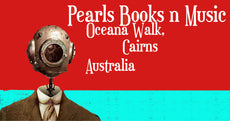
🔴 Condition - Good 🔴
In this special issue of 'Art History', a group of international scholars investigates the workings of the 'Academy' in the cities of London, Madrid, Antwerp, Paris and Dresden in the latter half of the 19th and the very early years of the 20th century, from the point of view of the artists who trained and exhibited under their auspices. Art schools and academies are complex organizations; their functions as arbiters of taste and as art schools were often in conflict with their role as sponsors and exhibitors of new art. Who was taught by whom? What did students hope for and what did they receive in the academy schools? What did it cost and who paid? How were the spaces of exhibition controlled? In what ways were nationalist ideals promulgated in academies that were national institutions but in which students were often of varied national origin? In what ways were academies state institutions and how - through the central role of the life class - did they mediate other forms of knowledge such as medicine and ethnography?
Questions such as these are germane to the series of detailed studies contained in this volume, which is notable for the substantial body of new research it contains. All surviving documents on the courses taken by 'Brucke' artists, the courses taught by their teachers and the artists addresses are published in appendices to Lasko's chapter. The book provides appendices containing significant new data on all British and American students at the Academie Royale in Antwerp 1877-1885. This title should be useful to scholars concerned with European painting between 1860 and 1906 and should be of interest also to historians and art historians working with art education and the history of exhibiting.
Translation missing: en.general.search.loading
